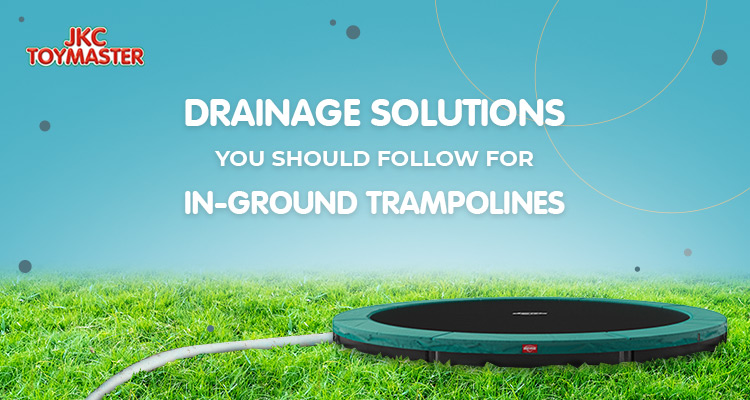Drainage Solutions You Should Follow for In-Ground Trampolines

In the beginning, in-ground trampoline installation might seem simple – like digging a measured hole and accommodating the in-ground trampoline structure inside the hole. But, the reality is twisted and different. Safe and durable in-ground trampoline installation and continuation calls for planning the walls, retention and ventilation, along with detailed planning on draining out excess water likely to gather inside the trampoline pit if not thought of earlier.
Is a Drainage System Needed For an In-Ground Trampoline?
The one-word answer to this question is YES. Unless your residing area is of a very low water table, then the trampoline hole is at risk to be filled with water when the storm will rage on. So, other than dealing with such a scenario when it has already taken place, the best action to take is being proactive to create a drainage system while initially installing your sunken trampoline.
The Drainage Options for the In-Ground Trampolines
After you buy in-ground trampolines and check out the videos on the installation, then it is time to follow the ways for accomplishing adequate drainage for the in-ground trampoline.
1. Temporary Drainage Pumps
If excessive rainfall is not expected based on your area’s soil and climate, then the ideal solution is the temporary drainage pump and an extension cord. Plugging the pump in, and inserting the inflow hose onto the trampoline pit, it should be switched on and then the excess water will be drained out sooner.
2. Permanent Drainage Pumps
In case, you are foreseeing water retention to be the continuing problem under the in-ground trampoline, then you need to think of having a permanent drainage pump into the trampoline pit at the time of the installation process. All these permanent pumps have to be placed under the trampoline by connecting to a permanent electric source. You will have to dig a small trench for the outlet hose and cable. These are turned on typically by using a switch in the shed or garage or else with a float switch turning automatically on when the water rises to a particular level.
3. Drainpipes
Drainpipes as the drainage solution are the most pocket–friendly and easiest option. You have to dig a trench from the trampoline pit’s bottom and connect it to the nearby drainage pitch. Next, place a 4” drainage pipe into the trend for the water to whisk away automatically.
4. Drainage Pits Or Else Soakaway Holes
You have to dig a small 2′ x 2′ x 2′ hole in the trampoline pit’s centre and fill it up using gravel for implementing this drainage solution. Also known as the French drain, this hole soaks up excessive water so the trampoline pit is fine and dry.
Allowed water under or on the trampoline will definitely damage the materials. Thus, needless to mention your investment will be turned down to the water. That is why taking preventive measures as precautions makes sense, and so implement the drainage systems. The needed information has been shared here, now it is your time to take up the necessary steps.

 (067) 31391
(067) 31391
